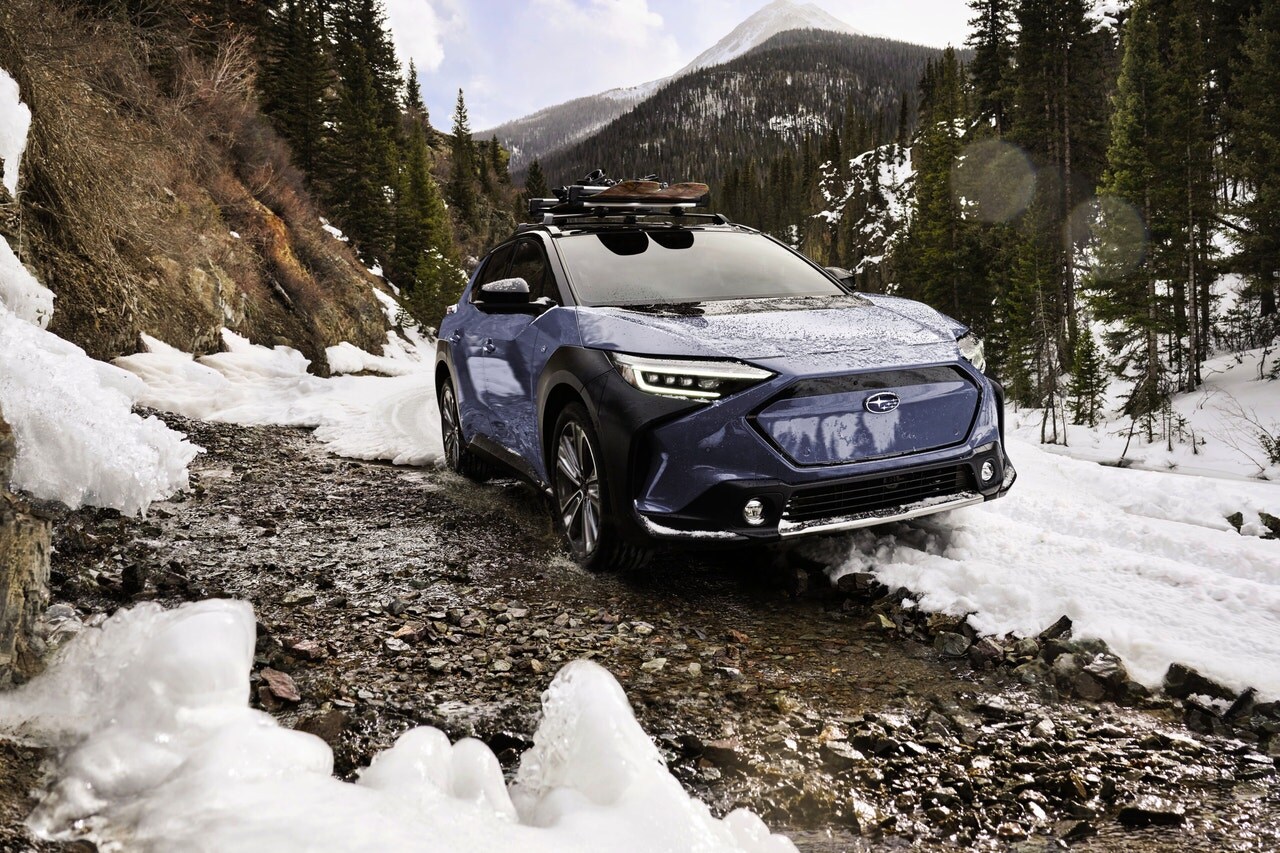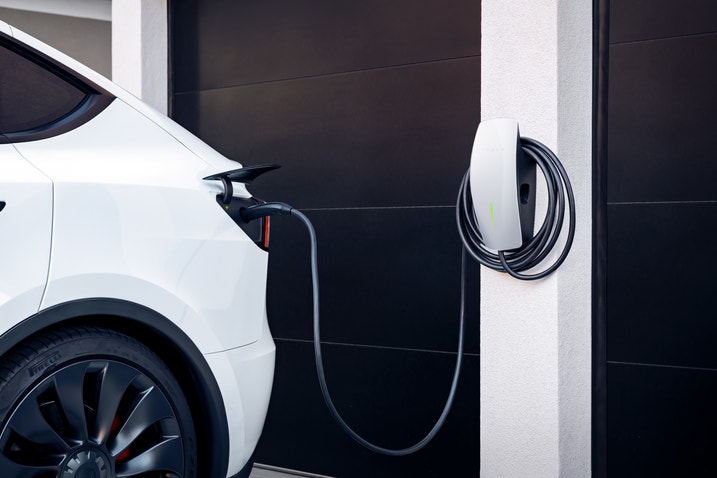EV charging and demands on the power grid
Charging electric vehicles does produce greenhouse gases, but because power plants generate electricity efficiently, the amount is less than what an ICE vehicle creates through its tailpipe. But before we get there, let's see how much electricity it takes to power an EV.
EV charging uses less electricity than a water heater and an air conditioner in a typical U.S. household, according to a 2020 study done by the U.S. Energy Information Agency (EIA). How much electricity an EV uses depends on a few things, including the EV's efficiency and how much you drive. If you drive the national average — about 37 miles a day or 13,500 miles a year — and drive an EV with an average efficiency, then it consumes about 394 kWh a month. The EIA says the average U.S. household uses 899 kWh a month. Check out our article to find out how much electricity your EV (or one you want) uses.
The amount of greenhouse gases created by charging an EV depends on the source of electricity. Charging an EV from electricity generated from a coal power plant is still much cleaner than the emissions from an ICE vehicle and significantly cleaner if the electricity is coming from a renewable source like solar or wind. So let's see what the numbers say using the nationwide average of different energy sources. MIT's Climate Portal says that according to data from the U.S. Department of Energy, EVs on average create 3,939 pounds of carbon dioxide equivalent per year, and gasoline-powered vehicles create 11,435 pounds per year. Using data from the EPA, Recurrent Auto says a new gasoline-powered car produces 410 grams of carbon dioxide per mile versus a new EV that produces only 110 grams per mile throughout its life.
What about the power grid? Can it handle the increased demand from EV charging? The data suggests it can. Scientific American says that in California, which has the most plug-in vehicles in the nation, totaling over 1 million, charging accounts for less than 1% of the grid's total load during peak hours. In 2030 when EVs in California are expected to surpass 5 million, charging is expected to account for less than 5% of the total demand. Lindsay Buckley, a spokesperson for the California Energy Commission, described that as a "small amount" of added demand. Experts say that as long as the transition to EVs is gradual, utilities will be able to add the needed capacity.
Furthermore, a recent report from CleanTechnica shows how EVs have yet to impact national energy production. Last year, 1.2 million EVs were sold in the U.S., but according to data from the EIA, electricity generation was down by 1.1% through November of 2023. The report also states that electricity use has been flat for the last 20 years, even though, among other things, 2.5 million EVs plug into the grid. However, other reports suggest there are 3.3 million EVs on U.S. roads. CleanTechnica suggests the improved efficiency of electric appliances is the reason why electricity generation hasn't increased.
Winner: EVs
EV battery repurposing and recycling: Capping off the sustainability of EVs
Another reason electric vehicles are better for the environment is that their battery packs can be refurbished or repurposed when they lose too much capacity to power an EV or can be recycled when they are at the end of their life. This is usually not the case with engines from ICE vehicles, which usually end up in scrapyards when they aren't needed anymore.
EV battery recycling has received a lot of attention recently, but it's not necessary until a battery pack is completely spent or seriously damaged. If the battery pack still has life left or isn't damaged beyond repair, it can be refurbished. Refurbishing EV batteries is a growing industry, and Spiers New Technologies has been in the business for 10 years. The Oklahoma-based company is a "one-stop solution" for used and faulty EV batteries, according to a report from CNBC. After the company runs a diagnostic and determines the health of the battery pack, it can be refurbished, reused or recycled if it's beyond repair. LG Energy Solution, one of the world's largest battery manufacturers, collects EV batteries that are no longer suitable for EVs. Like Spiers New Technologies, the company determines if it can refurbish the battery pack to meet technical requirements and safety standards or reuse it for a second-life application. These are just two of many companies that determine the fate of used battery packs. Make sure to read our in-depth story on EV battery recycling benefits, methods and challenges.
Reusing EV battery packs is another growing industry. When a battery pack loses a certain amount of capacity, usually about 30%, it's no longer viable for an EV, but it has plenty of life left for a second-life application. The majority of second-life uses are stationary power storage units. Based out of California, B2U Storage Solutions has used thousands of secondhand EV battery packs to manufacture what the company calls EV Pack Storage (EPS) cabinets. The cabinets, which resemble small shipping containers that house many battery packs, are used for large-scale energy storage systems. Over 1,800 used EV battery packs are currently being used in two large-scale hybrid energy storage sites. B2U is just one of many companies around the world that repurpose used EV battery packs for stationary power storage. For a deep dive into EV battery repurposing, don't miss our article on what happens to EV batteries.
When battery packs are completely spent or damaged beyond repair, their raw materials can be recycled for the manufacturing of new battery packs. This kind of recycling will not only help fill the demand for raw materials but will also reduce the dependence on mining raw materials, which is costly and produces a lot of greenhouse gases. Recycling EV battery packs is relatively new, but a few major players and automakers have been in the business for several years and it's expected to grow quickly thanks to an influx of retired battery packs over the next decade. A study from Precedence Research says the global EV battery recycling market was valued at $2.8 billion and is projected to grow to $42.8 billion by 2032.
Edmunds says
There's a lot of misinformation out there regarding the impact of electric cars on the environment. But the data and our research confirm that EVs are a more sustainable and environmentally friendly alternative to ICE vehicles. As battery technology and manufacturing improve and more renewable power is developed, EVs will become increasingly greener.


 by
by  edited by
edited by